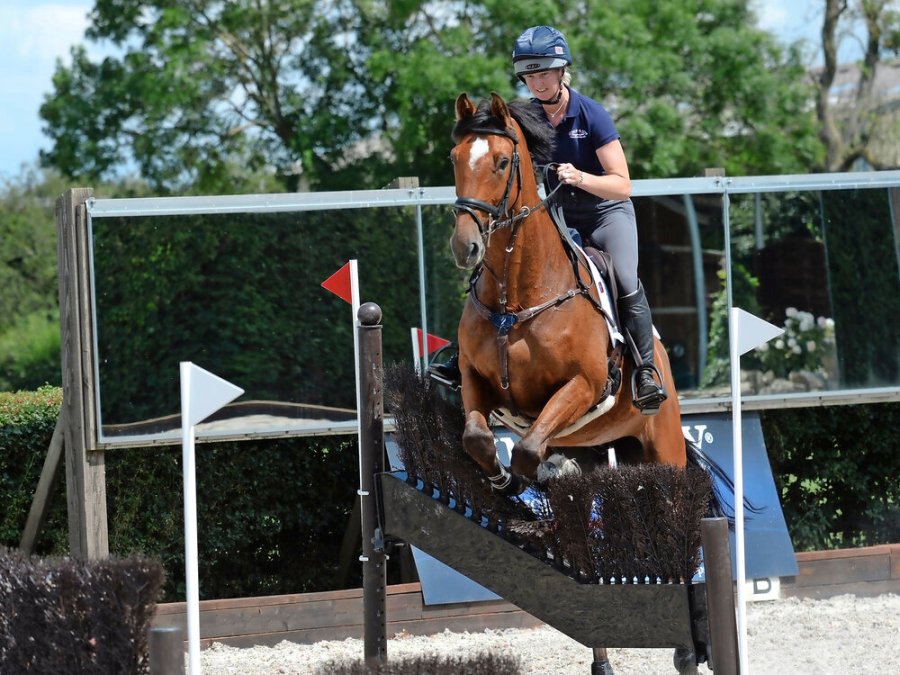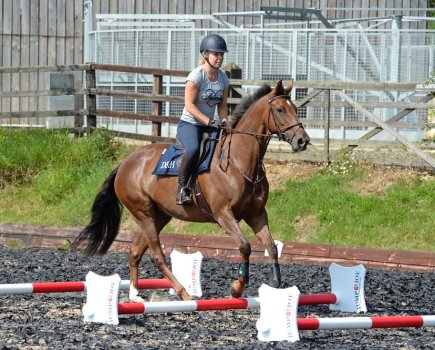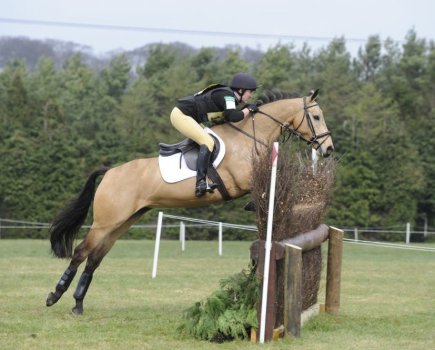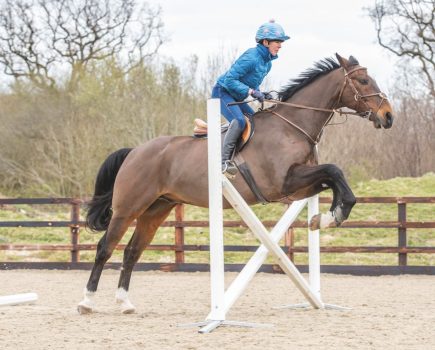Not a fan of skinnies or angled fences? Eventing guru Richard Waygood shows us stress-free ways to tackle them.
Skinny and angled fences are a feature on most cross-country courses and are designed to test both horse and rider, so they’re always going to be a challenge.
Your horse needs to learn how to negotiate this type of fence with confidence, so training at home is a must before you head off to try them for real.
Arena schooling is great for this as it allows you to build up slowly and also go back a step if needed.
Our models in the photographs are experienced event rider Georgie Spence and her not-so-experienced horse Peter, who she had only owned for two weeks when these pictures were taken.
Three rules for the right line
Jumping skinnies successfully is all about riding the right line. Richard’s three rules for getting this right every time are:
- Put your horse in the correct way of going for the jump you’re tackling.
- You decide on the right line to take, not your horse.
- You must sit in balance and keep your weight through your heels, with light hands.
Skinny means skinny
For this exercise you’ll need a skinny brush fence set between two skinnies with no wings and one pole either side.
“This indicates clearly to the horse where he’s heading and stops him ducking out,” says Richard. “Always train with flags on the fences as this teaches your horse that he has to go through them.”
Ask your horse to go over the two fences either side to start with. Since they have no wings, it gives the horse more room, and they’re smaller too.
“Approach in canter, keeping your eyes up, your hands low and staying balanced. Use a little counter flexion to keep your horse straight.
“As he lands, ride forward in a straight line and don’t let him turn until you want him to. This tells your horse that you’re in control — this is the time he needs to listen to you for instructions.”
Ride this exercise in trot first if your horse is inexperienced.
Don’t miss the latest issue of Your Horse Magazine, jam-packed with training and veterinary advice, horse-care tips and the latest equestrian products, available now.









